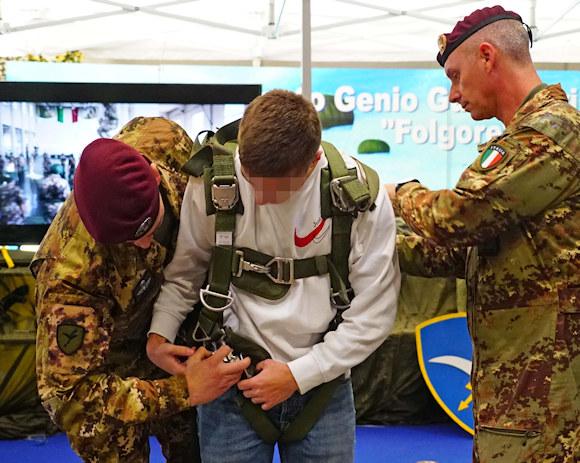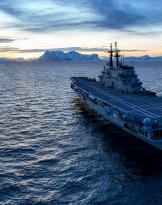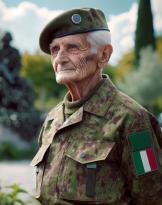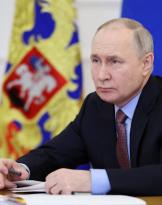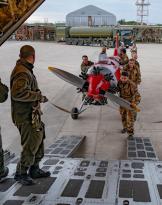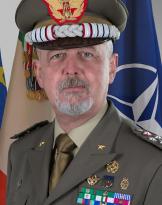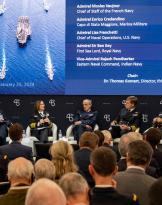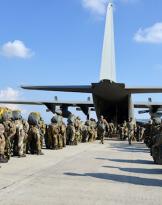With the proposed law on mini naia, announced by the president of the Senate, the military service is to be restored, but in a non-compulsory form and for a duration of "service" of forty days, for limited contingents of volunteers. We learn that it has the purpose of promote civic spirit and love of country. And to do this we would resort to direct experience, in the field, of the values of military culture, considered formative, or useful even outside the reality of the world of stars.
The motivation for this initiative honors the military condition, as it is conceived and organized here. The Italian soldier operates on the basis of the constitutional provisions of article 52 (The defense of the fatherland is a sacred duty...) which integrates with article 11 (Italy repudiates war as an instrument for settling international disputes...), which also establishes … limitations on national sovereignty necessary for peace and justice among nations. Therefore, Italy has a non-Clausewitzian vocation, in the sense that it does not equate war with politics (war is the continuation of politics by other means, says Clausewitz), but repudiates it. Moreover not denying it as a phenomenon in itself, as a possible occurrence, for which the armed defense of the State is always envisaged and it is everyone's duty to participate in it (duty tempered by the rules governing conscientious objection). From this dictation derives the juridical corpus of the Code of the Military Order and related application regulation (Legislative Decree 66/2010 and Presidential Decree 90/2010) which, among other things, defines the tasks of the armed forces, and includes the Regulation of Military discipline. This set of rules, to which it is necessary to add the military doctrine (strategy, operational art, tactics, technical procedures...) as a whole constitutes the set of "declared values" of the national military organizational culture.
The ethical and deontological component finds precise enunciation in the regulations and codified procedures themselves, but also in the "tacit shared assumptions" among the military personnel, often expressed in the "artifacts", such as the flag-raising ceremony1. Therefore, the project is that this cultural context, rich in meanings, should be shared by the young people of the mini naia, to provide them with an opportunity for a life-giving experience, aimed at inspiring civic sense and love of country.
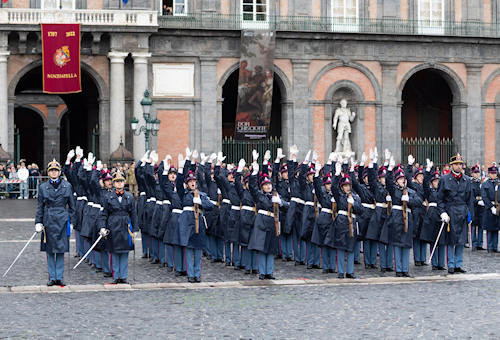 Going into the essentials, the military spirit consists in the awareness of having to fulfill one's duty, within the military community, therefore in a condition of shared commitment; taking into account the phenomenon of war, which a soldier knows is an immanent reality, that is essential, therefore considering the exposure to the risk of life; acting in all circumstances with convinced discipline and determination (fulfilment of the mission), or in punctual compliance with the constitutional, ordinary and regulatory provisions that define the Law, International Humanitarian Law and military life in general. THE'love of country it is a sentiment in keeping with this orientation, generated by the sense of belonging to the State, a reality built up by the generations that preceded us and recognized as a necessary entity for living in peace and prosperity. Military schools, academies and corps (regiments and equivalent units) inculcate this phenomenology, which is formally and substantially adhered to when sworn in. Now, the mini naia would like to become a moment of encounter with this context of values, to be approached through an operational experience.
Going into the essentials, the military spirit consists in the awareness of having to fulfill one's duty, within the military community, therefore in a condition of shared commitment; taking into account the phenomenon of war, which a soldier knows is an immanent reality, that is essential, therefore considering the exposure to the risk of life; acting in all circumstances with convinced discipline and determination (fulfilment of the mission), or in punctual compliance with the constitutional, ordinary and regulatory provisions that define the Law, International Humanitarian Law and military life in general. THE'love of country it is a sentiment in keeping with this orientation, generated by the sense of belonging to the State, a reality built up by the generations that preceded us and recognized as a necessary entity for living in peace and prosperity. Military schools, academies and corps (regiments and equivalent units) inculcate this phenomenology, which is formally and substantially adhered to when sworn in. Now, the mini naia would like to become a moment of encounter with this context of values, to be approached through an operational experience.
Since each individual is the bearer of his own cultural phenomenology, the result of the environment in which he lives (today also a virtual environment, with the media pressure created by an influencer and other trendsetters, within everyone's reach through the devices we are equipped with), and of the education received, it will be necessary to manage, in the context of the barracks and over the course of forty days, a comparison between different cultures so that, critically, the neophyte becomes aware of the value basis of the military condition and welcomes it in his own experience-based training process. Therefore, communicating to young people eager to have this experience the ethical and deontological component of the Italian armed forces, in the time available, constitutes the focus of the provision, and being able to do it adequately is prefigured as a demanding operation in terms of complexity and scope. Moreover, assuming the mini naia as a voluntary activity, it is presumable that those who participate will already be well oriented.
It was different when the armed forces recruited conscripts through the compulsory military service system and the commanders had to motivate the soldiers in their daily actions and in carrying out training and barracks and garrison services. But it was successful, with satisfaction, as is evident today from the attendance of former conscripts to the numerous weapon associations.
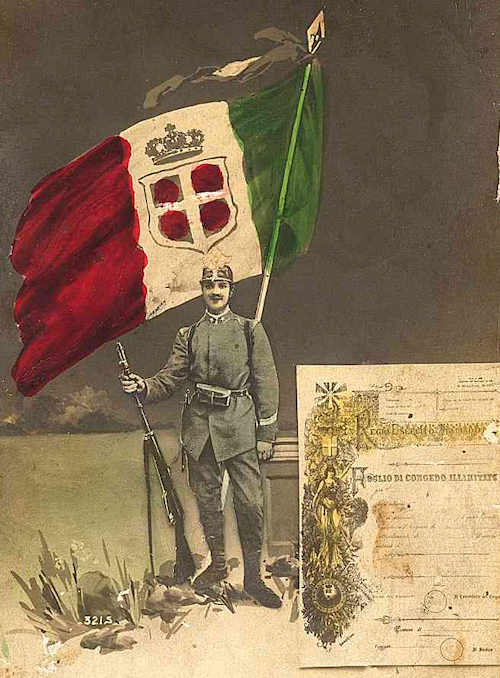
That said, a digression is now in order. Arguing about the values of the Italian military condition2 sounds strange, semantically dissonant, the term of mini-naia.
"Naia" is an obsolete word, which originates from some tacit and shared negative assumptions of a now remote time, and expresses abjection for a certain type of hierarchical relationship. Its root lives in the Venetian dialect, Friulian (it seems that the word naia had been invented by the Alpini during the Great War) and stands for genia, semantically a negative meaning of hierarchy. Under naia means being subjected to someone who carries out the action of command, precisely belonging to the lineage of superiors in a position: behind the cannons, in front of the horses and ... away from the superiors, recited an adage of barracks, precisely of that era. So, while sometimes connoting itself as a joking way of saying, the term naia contains a negative meaning.
Elsewhere it was said "are we men or corporals?". It is still current today and, alas unanimously accepted, to call the procurers of work (sometimes underpaid and often without protection) 'corporals' for our immigrants, in our local crops. Not just a semantic problem that of the term naia, therefore, which should be solved. For this, below, I will call the initiative with "occasional military service", hoping that the drafter of the law will be able to find more appropriate words.
In forty days and with the conditions of the case, it is not possible to think of operating either a training process or the conferment of skills. Training requires lengthy processes, and acquiring military proficiency requires studying and practicing a broad spectrum of processes, as well as using sophisticated equipment.
In the case of occasional military service, the categories of "know how" and "know how to be" would be replaced by a brief experience of the barracks environment, with some visits to training areas, where available. Infantry training, basic, could be the only formula for the Army to adopt. Leaving aside superfluous formal instruction exercises - attention, rest and greeting will be sufficient for the flag-raising ceremony - individual weapon handling and simple exercises can be expected. Volunteers would operate in squad and platoon level units, according to the organization of light infantry. In doing this they would experience, in particular, group life and the hierarchical relationship with an instructor assigned to them.
But it must also be considered that the main criticality of this project lies in its brevity. The training processes adopted by the armed forces are necessarily developed through multi-year courses held in military academies. And they continue in the employment units under the supervision of commanders called to judge the work of the subordinates, and, in doing so, to determine their career development. Indeed, in a week you will get used to the hourly regime of the barracks, but it will take much more time to assume the frugality, the essentiality typical of a soldier who must be able to adapt to the most difficult situations, together with the strength of mind necessary to fulfill the critical institutional tasks, such as extended missions, if not also the combat. Limit experiences will also be needed to understand what one's abilities are on a physical and psychological level and gradually overcome them with exercise, to reach the prescribed standards, i.e. functional to the performance of military tasks.
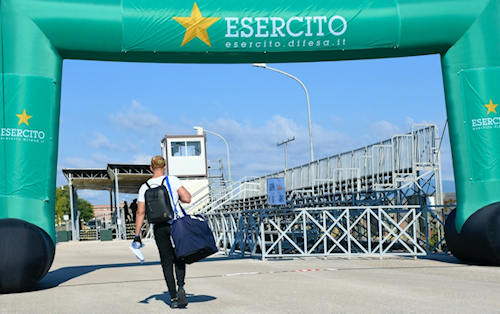 As far as the assimilation of the sense of state, love of country and respect for the institutions, will depend on how the conscience of every single individual evaluates the comparison with the factual reality in which one lives, of which the forty days of training military can only constitute a short segment.
As far as the assimilation of the sense of state, love of country and respect for the institutions, will depend on how the conscience of every single individual evaluates the comparison with the factual reality in which one lives, of which the forty days of training military can only constitute a short segment.
In twelve months of military service, this training process, in a reasonable proportion, was accomplished in favor of the military of the past, and the operational component of the armed forces was effectively a training ground for the formation of character. It was, particularly, if you were serving in highly operational units, where training was conducted at a high pace. On the other hand, whoever manages volunteers for occasional military service one day will have to know how to dose a few moments of training with the illustration of an overview of military life, inevitably very summary, in an attempt to generate significant experience, but no more than this can in practice be done.
Will it be sufficient to achieve the stated purpose? The Leverage of the past, only suspended and never abolished, in addition to keeping alive a military instrument capable of operating in the context of collective defense - it was Cold War - it also had the function of maintaining framework units set up in peacetime for mobilization in the event of conflict. It will be recalled that in the eighteen, then twelve, then ten months of military service, all the skills necessary for the functioning of complex, autonomous organizational units were created, capable of carrying out numerous tactical activities, i.e. living, moving and fighting. And those units were also validated in terms of operational efficiency both within the Atlantic Alliance and at a national level. Conversely, the institute that we think of today will not be able to meet any functional need of the armed forces because forty days of activities, however well planned, will not allow the development of military skills, not even on an individual level. Instead it will bring a additional burden on the armed forces for use of resources: instructor and supervisory personnel, materials, means, barracks and training areas that are already difficult to find, in addition to the costs in financial terms.
Thus, once again, a role is revealed dual use of the armed forces, called here to provide a service to the nation in terms of primary/secondary socialization processes in favor of young volunteers, a process now unrelated to institutional tasks.
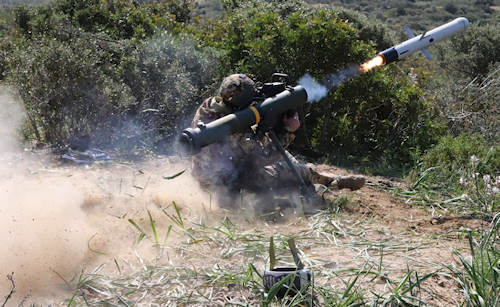 But could it be hypothesized to build up a pool of reservists through occasional military service to feed, if necessary, cadre units, or integrate those already alive? The creation of a pool of reservists would require a truly wide range of predispositions: recurrence of recall periods to confer real skills, the introduction of specialization courses for the acquisition of more complex skills, but also the creation of logistical bases for the management of a pool of mobilization materials. And, even before all this, the reconstitution of a bureaucratic system of mobilization, suitably integrated with the territory, on the model of the one that already existed before the suspension of the military service. So people should be motivated to join the calls to service with adequate incentives, to be introduced into our legal system.
But could it be hypothesized to build up a pool of reservists through occasional military service to feed, if necessary, cadre units, or integrate those already alive? The creation of a pool of reservists would require a truly wide range of predispositions: recurrence of recall periods to confer real skills, the introduction of specialization courses for the acquisition of more complex skills, but also the creation of logistical bases for the management of a pool of mobilization materials. And, even before all this, the reconstitution of a bureaucratic system of mobilization, suitably integrated with the territory, on the model of the one that already existed before the suspension of the military service. So people should be motivated to join the calls to service with adequate incentives, to be introduced into our legal system.
But will the mobilization then be necessary, or useful for our country? How many forces are needed to face a hypothetical conflict today? And what should these forces be like? To answer these questions it is necessary to refer to the national defense and security policy, to the assessment of risks and threats, taking into account the international positioning.
The Atlantic Alliance, as is known, is defensive in nature and provides for common defence, ie the sharing of burdens in the event of conflict. Italy has adhered to it from the outset, also accepting the external constraint of the transfer of sovereignty, limited and functional to international peace and stability. Therefore, it is mainly in that place that the entity that must possess the military instrument should be evaluated, in order to be credible in the current geopolitical scenarios. Finally, it is necessary to consider the use that could be made of the reservists. Military history can provide indications in this regard, but the ongoing conflict in Ukraine is also decisive. There, seeing different types of combatants at work, it is possible to evaluate that the most exposed ones seem to be reservists, because they were summarily trained, brought to the front and placed in units without strong bonds of tenure or esprit de corps. All this makes them vulnerable to the enemy, but also unsuitable to face the most hostile environmental conditions and life in the trenches. This means that, in war, the reservists constitute the weak link in the chain of military capabilities that the state deploys. This happens even more easily when the arrangements adopted to create this component are not adequate for typical scenarios warfighting. In this perspective, in my opinion the use of occasional military service to feed a pool of reservists should be excluded.
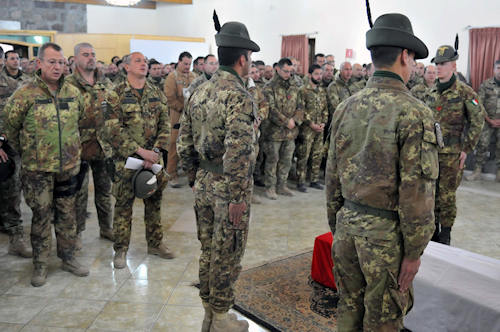 The military organizational culture is a dynamic phenomenon, in continuous transformation, which can turn towards gains in efficiency, which is always in tune with the value contents; or directing its trajectory towards an involution, a fall in the efficiency of the structures, generating an increasingly dysfunctional internal climate, which inevitably sees the weakening of basic values and deontology. External causes, including military policy, the care of the instrument by the political decision-makers who are responsible for it, and internal causes can affect, in one direction or the other: the command action, the quality of the personnel, use of available resources and training.
The military organizational culture is a dynamic phenomenon, in continuous transformation, which can turn towards gains in efficiency, which is always in tune with the value contents; or directing its trajectory towards an involution, a fall in the efficiency of the structures, generating an increasingly dysfunctional internal climate, which inevitably sees the weakening of basic values and deontology. External causes, including military policy, the care of the instrument by the political decision-makers who are responsible for it, and internal causes can affect, in one direction or the other: the command action, the quality of the personnel, use of available resources and training.
If it is assumed today to restore an albeit partial form of military service, with educational purposes, at the base there is the recognition of a value. The credit must be paid to those who, more exposed, have been able to show it and communicate it fully. I think of how many, even in the so-called peace missions, have fallen on duty, or been injured, in the line of duty. But also to all the others who supported the overall organizational effort. And how can we fail to recall those who, in the event of a pandemic or natural disaster, have demonstrated the efficiency of the military tool.
What will be the final choice of the Legislator, now it is not possible to know. However, the hope is that the recognition of the military virtues of our Armed Forces will also support an enlightened and effective all-round military policy, such as to preserve the spiritual richness of the military condition, with its peculiarities, and at the same time guarantee the efficiency of devices, as a clear and forward-looking strategic vision requires today.
gen. ca (ris.) Antonio Venci
1 Anyone wishing to delve into the Military Organizational Culture you will find arguments in: Center for Army Studies. “Military Organizational Culture”. (https://www.centrostudiesercito.it/cultura-organizzativa-militare.html).
2 We speak of Italian military organizational culture because, as already mentioned, it is based on laws and regulations in force here. Therefore, each country has its own military organizational culture, even if the similarities are numerous, particularly in the external manifestations of the artifacts.
Photo: Italian Army / web / ISAF

